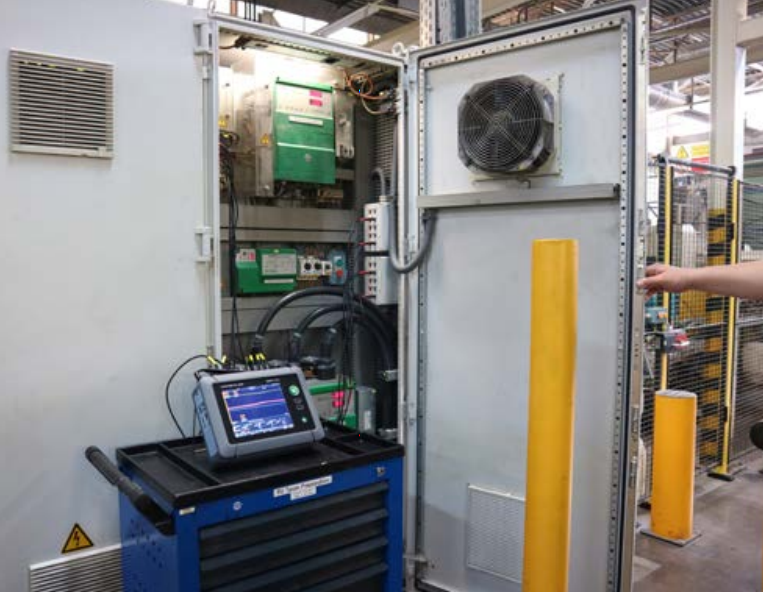At the Michelin tire manufacturing plant in Homburg/Saar, up to 3000 new tires come off the production line every day along with around 1800 retreads. Tire production is a technically complex process and required multiple electromechanical parameters to be recorded including voltages, currents, pressures, temperatures and PLC control signals. Michelin engineers have been using the Yokogawa OR100 for maintenance, troubleshooting and analysis of all the production systems.
A firm favorite makes way
Having a versatile yet portable unit was vital for the Michelin team in their investigations. The lightweight and portable OR100 could be used in almost any corner of the production line across the expansive facility at Michelin and was the go to device for maintenance technicians for their fault finding and troubleshooting missions. However with the release of Yokogawa’s DL350, Michelin was considering an upgrade from the long serving OR100.A particularly important feature of the OR100 was the presence of isolated analog inputs. For any measurement instrument to be considered as a successor to the OR100, it was vital to have this feature. The choice was made easy by the team, because not only did the DL350’ have modular isolated inputs and the ability to record signals from new production systems, but also the ability to capture, and record measured values from older systems. “Since the systems are of different ages, they are equipped with controls ranging from simple contactor controls to logic controls and state-of-the-art electronics. We are responsible for ensuring production systems run as smoothly as possible and are quickly ready for operation again in the event of malfunctions”.
Lightweight technology for easy troubleshooting
Production facilities are noisy with tightly spaced machinery and lots of moving parts with roaring motors and buzzing belts. This noise level is an enormous challenge for the engineer, not to mention the constant heat generated by the machine drives: While pleasantly warm in winter, it’s a different story in summer. Having access to a lightweight and portable measuring device allows engineers to act without additional energy expenditure. Further advantages include the two acquisition modes of the portable DL350. Whether capturing short snapshots or long-term logging, the control signals provide valuable information for the technology. Also important are options for recording the reference signal from the 550kW extruder drive, logging armature current and voltage and for measuring field current and voltage. This makes troubleshooting efficient and helps to find possible causes for quality losses.
Embarking on a new generation
It is crucial that when handing over the engineering responsibilities baton to next generation engineers, the importance of reliable results and speed are not lost on either of them. Mr. Schultheiss (former senior engineer at Michelin) recollects an example from the recent past : “Some time ago, an error occurred sporadically on a tire wrapping machine. In order to find it, we had to record various signals over several hours. To do this, we simply hung the DL350 in the switch cabinet, connected it and started monitoring. With the help of the trigger and analysis functions of the device, we were able to locate a cable break that only occurred in a certain process step in the production process. Without the DL350 ScopeCorder, we would probably have searched much longer.” Since special attention must be paid to cables, where there is movement in production, the scope mode on the DL350 enables the detection of voltage drops and voltage peaks on continuously moving cables – Thus system failures can be avoided. As Mr. Schultheiss stepped into retirement after more than 40 years with Michelin, he also heralded the end of the OR100 era ushering in a new beginning for the new generation and the DL350 ScopeCorder in Michelin’s pursuit of manufacturing efficiency.
Read the article from Michelin to learn more.




No Comments so far
Jump into a conversationNo Comments Yet!
You can be the one to start a conversation.